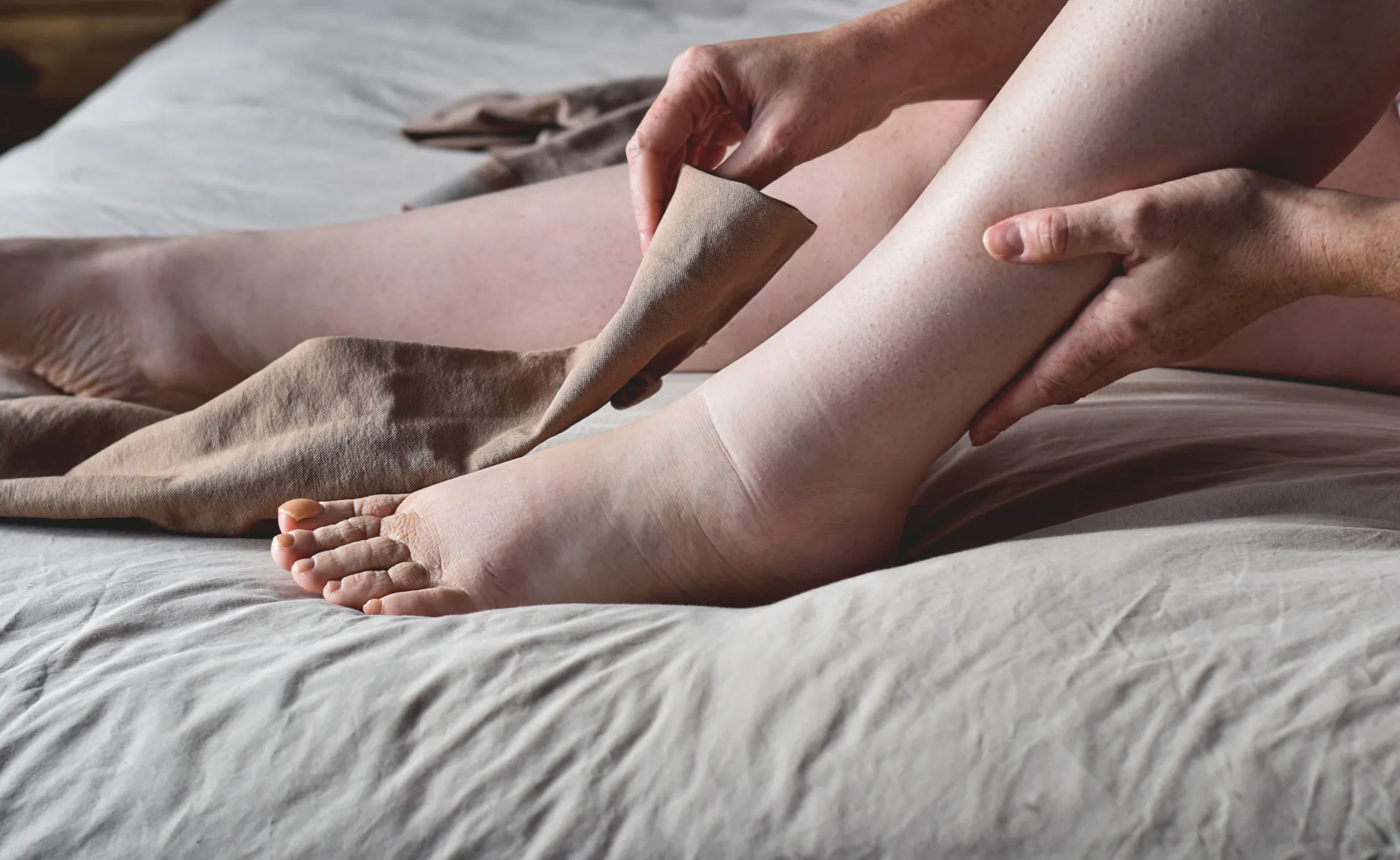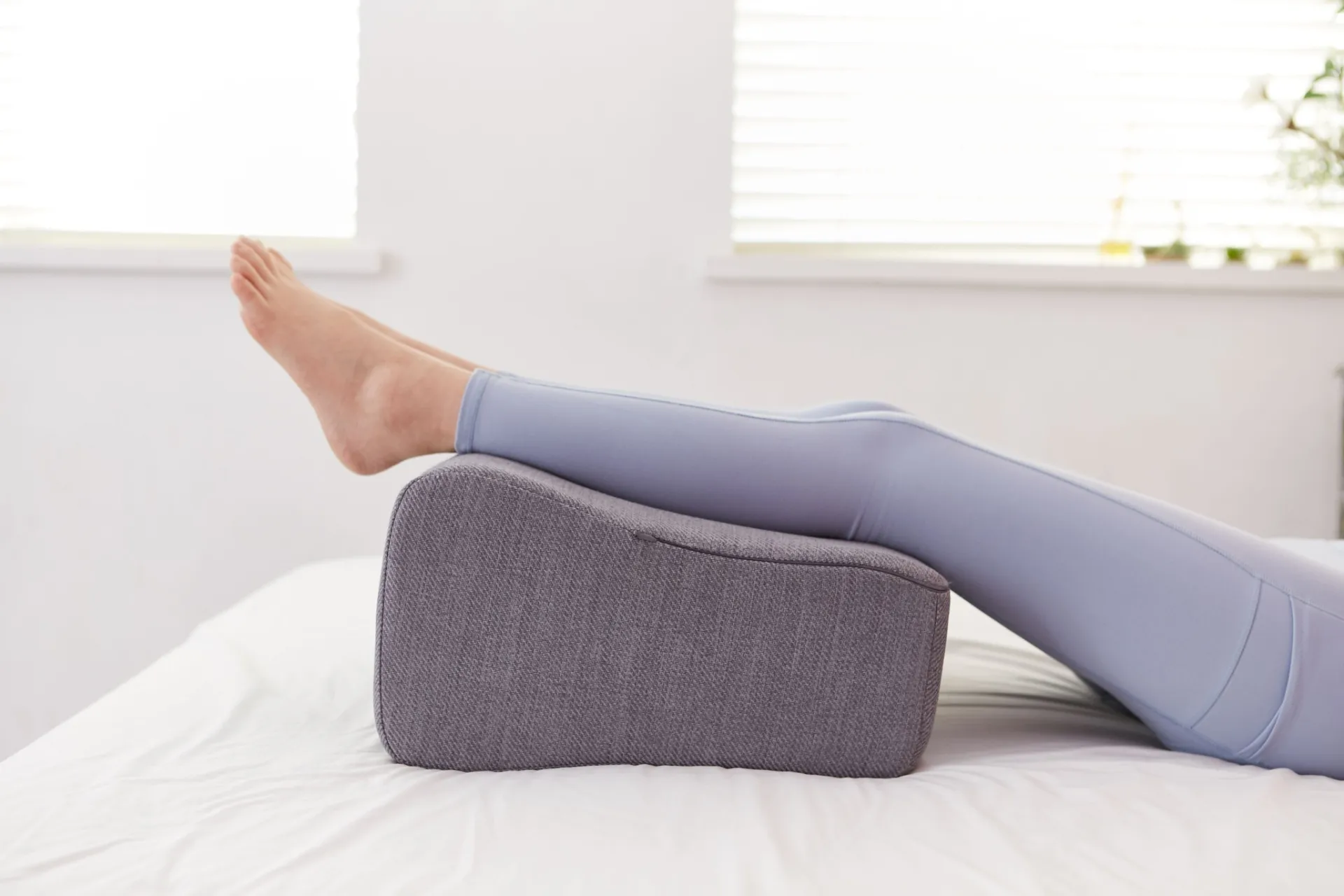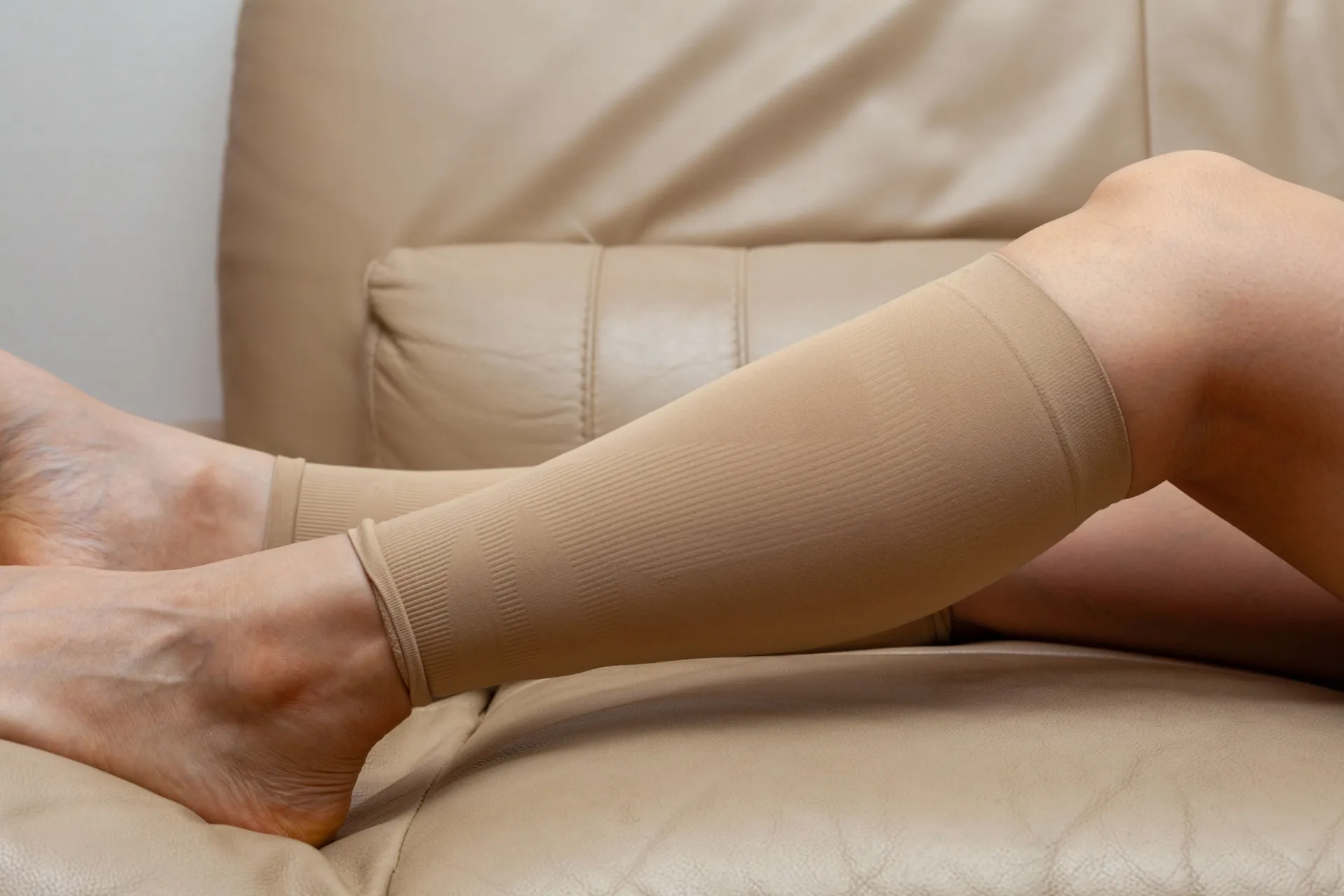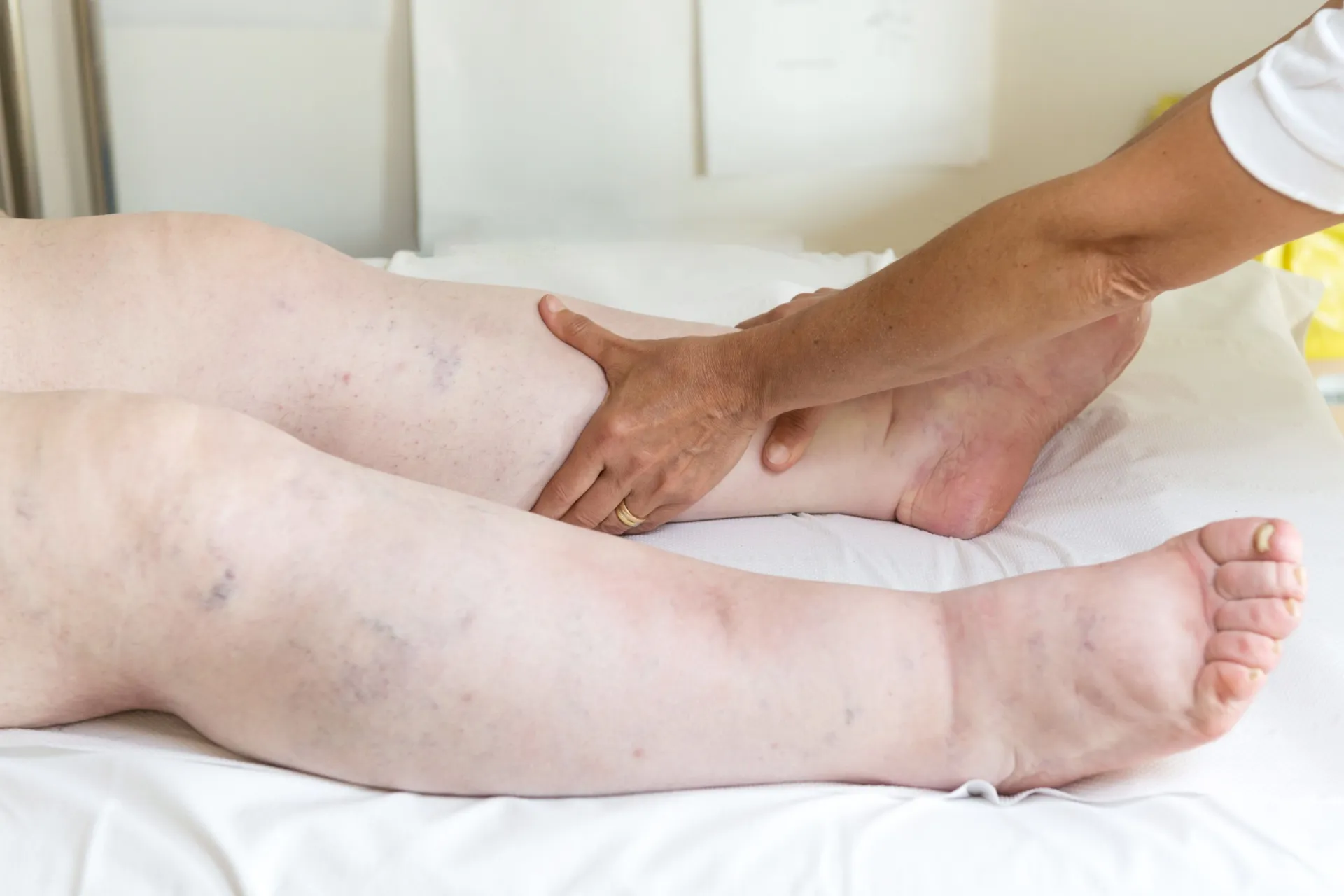Decreased Fluid Drainage: Lymphedema

Aside from some special cases (as with pregnancy or during a woman’s monthly cycle), swelling of the legs, ankles and feet should not be dismissed as normal. If you experience swelling in these areas, it may be your body’s way of warning you about an underlying vein disorder or some other medical condition.
Leaving this issue unchecked may lead to progressively worsening symptoms that may affect your daily life and comfort level. At Prevosti Vein Center, Dr. Louis G. Prevosti utilizes his vast experience in evaluating leg swelling, venous disease and lymphatic disorders to provide patients with leg swelling the best possible chance for a good outcome.
What Causes Leg Swelling?
When there is too much fluid outside the cells of the tissues in your legs (interstitial fluid), or when the body’s ability to clear this fluid is impaired, swelling occurs. This can be caused or worsened by several disorders. Let’s start with disorders that can increase fluid production:
Heart, Kidney, Liver, and Endocrine Problems
When these organs and systems in the body are not functioning properly, fluid buildup in the legs may occur. Gravity pulls excess fluid to the lowest portion of the body, which is your legs when you are upright. When the fluid accumulation outpaces the body’s ability to clear the fluid, swelling develops. In these cases, evaluating internal organ function and addressing any organ disorder is the correct way to address the swelling.
Chronic Venous Insufficiency
The veins in your legs are equipped with special one-way valves that allow blood to move toward the heart while preventing backflow. When these valves malfunction, blood can flow in the reverse direction. Without properly functioning valves, gravity causes blood to pool under increased pressure in the leg veins.
Over time, the buildup of pressure in the affected blood vessels causes an increased amount of clear fluid to leak out of the veins and into the surrounding tissue. While some fluid production is normal and healthy, an excessive amount can lead to swelling. Swelling due to venous insufficiency is called phlebolymphedema.
When left untreated, venous insufficiency can cause additional symptoms to develop, including:
- Chronic swelling
- Chronic inflammation (redness, itching, irritation)
- Induration (firm patches of skin)
- Venous stasis dermatitis
- Scar formation in the skin and the tissue below the skin (lipodermatosclerosis, atrophy blanche)
- “Woody edema” (tight, swollen, hardened of soft tissues)
- Leg ulcers
- Pain, ache, cramps, restless leg
In many cases, treating the underlying venous insufficiency can improve or eliminate leg swelling.
Decreased Fluid Drainage
When the body is functioning properly, some clear fluid naturally passes through the vein walls to supply nutrients to the cells in the surrounding tissue. This fluid is called interstitial fluid or lymph fluid, and it is drained out of the leg by the lymphatic drainage system. Under normal conditions, no edema (the medical term for swelling) develops. However, when the lymphatic drainage system is not working properly, fluid accumulates in the tissue and swelling occurs. When lymphatic dysfunction leads to swelling, it is called lymphedema.
Most cases of lymphedema of the lower extremities in the U.S. occur for no apparent reason. This is called idiopathic (unknown cause) lymphedema, and can develop at any stage of life. Trauma, surgery, infection, radiation therapy, cancer, and injury can also compromise the lymphatic drainage system. Plus, lymphedema can be hereditary or congenital (meaning the patient is born with a malfunctioning lymphatic drainage system).
To summarize, leg swelling can be caused by the following:
- Idiopathic (unknown cause)
- Injury or Trauma
- Infection
- Heredity
- Congenital
- Surgery or radiation therapy
- Heart, kidney, or liver disorders
- Lymphedema
- Pregnancy
- Chronic venous insufficiency
- Endocrine disorders
- Blood clots (thromboses)
- Immobility and muscle weakness
- Cancer
- Autoimmune and connective tissue disorders
In a comprehensive evaluation, Dr. Prevosti will gather a detailed medical history and family history related to vein disorders, blood clots, previous surgeries or conditions you’ve had, and any injuries you’ve sustained to the lower extremities. A venous ultrasound will also be performed.
Dr. Prevosti has more than 30 years of experience in cardiovascular and vein surgery. In a compassionate and professional manner, he will tailor a treatment plan to help you restore your comfort, confidence and activity.
What Can I Do at Home to Help Leg Swelling?
While home remedies will not resolve the underlying vein disorder, Dr. Prevosti often recommends these simple strategies to help manage swelling symptoms between treatments or while awaiting your appointment.

Elevation Techniques
Elevating the legs above the heart for 15 to 45 minutes at a time, a few times a day, can help reduce swelling and discomfort. This technique allows gravity to assist your circulatory system and lymphatic drainage system in removing fluid. Lying on a sofa or bed with the legs slightly propped on pillows is ideal. A recliner chair pushed into a full reclining position is also a good option. Even lying flat, without leg elevation, such as when sleeping at night, will help reduce leg edema.

Compression Stockings
Compression stockings help your circulatory system and lymphatic system drain blood and lymph fluid out of your leg. Not all compression garments are created equal. Medical-grade compression stockings provide the right amount of pressure in the right places to specifically address your leg swelling. Ask Dr. Prevosti for recommendations on compression stockings.

Activity Modification
Engaging your calf muscles facilitates the return of fluid from your lower legs. If you are required to sit or stand for long periods of time at work, taking frequent walking breaks can reduce the pooling of fluid. Nothing is as good as walking, but even performing calf pumps/ calf raises or marching in place can help.
How Is Leg Swelling Treated?
The first step is to determine the cause of the swelling. Once this is determined, Dr. Prevosti will create a treatment plan. This may include leg elevation, compression stockings, lymphedema physical therapy and the use of lymph pumps. If the swelling is due to venous insufficiency, then a treatment plan will include definitive treatment which may include one or more of the following minimally invasive treatments:
- Endovenous laser ablation precisely treats malfunctioning veins using targeted laser energy delivered through a thin fiber.
- Radiofrequency ablation uses controlled thermal energy to seal damaged veins, redirecting blood flow through healthier vessels and reducing the pressure that causes swelling
- Ultrasound-guided foam sclerotherapy addresses smaller tributary veins that contribute to overall venous insufficiency and associated swelling.
- VenaSeal™ closure system uses medical adhesive to permanently seal problematic veins without requiring heat energy or extensive compression therapy.
- Varithena chemical ablation of abnormal veins.
- Ambulatory phlebectomy excision of bulging varicose veins
These minimally invasive procedures are performed in Dr. Prevosti's comfortable Canton office using local anesthesia. Most patients return to normal activities the same day. After treatment, it can take several weeks or months for the swelling to improve. Some patients experience faster results. Continued wearing of compression stockings and leg elevation after the procedures may also be recommended.

Choose Prevosti Vein Center for Specialized Vein Care
Whether you have recently developed minor leg swelling or have had significant swelling for many years, Dr. Prevosti’s careful evaluation may help your situation. The earlier you seek evaluation and treatment, the better the chance of controlling the swelling and preventing or stabilizing more chronic tissue fibrosis.
Vein care is all that Dr. Prevosti does. When you need an expert to accurately identify and fix the cause of your leg swelling, call to schedule your appointment and start on the road to improvement.